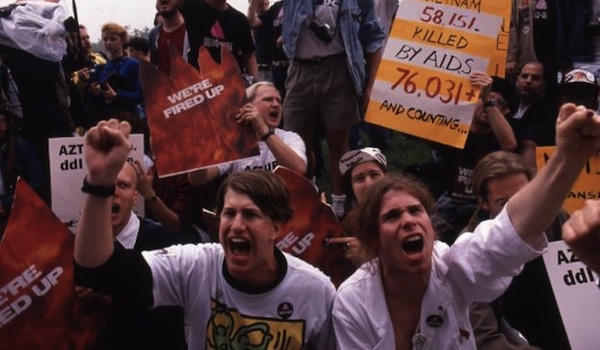How to Survive a Plague

How to Survive a Plague gets its title from the film’s standout moment, near its midpoint, when AIDS activist and writer Larry Kramer shouts down two quarreling activists with one word: “PLAGUE!”
“40 million deaths is a fucking plague,” Kramer tells them, admonishing them for their incivility. It’s a wake-up call to those around him, but it also startles this film’s audience out of an archive-induced stupor. How to Survive a Plague is many great things, but it’s also a bit repetitive in its first half. The way director David France elects to tell this story—mostly via grainy 1980s video camera footage—is essential, but it also keeps you at arms length for longer than it should.
It was Kramer’s impassioned call that did it for me. Everything that followed hooked into me like I was a fish after a worm. And maybe that moment will do the same for you. Maybe it’ll happen at a march on Washington when an older woman opens a small chest that contains the ashes of a loved one and a young man dumps his dead partner’s ashes on the front lawn of the White House. Or maybe it’ll be when one of our heroes, covered in skin blemishes, loses his sight.
At some point over the course of How to Survive a Plague, you’ll find yourself emotionally overwhelmed and totally involved. You’ll find yourself stricken by sorrow, anger. You’ll find asking for France’s forgiveness for nearly giving up during the film’s weaker points. And you’ll find yourself admiring this searing film as a total package, for that lengthy, grinding opening is merely setting you up for a total blindside of a catharsis.
The questions the film asks don’t, can’t have answers, but listening to the film’s heroes ask them is enough to break your heart. Could they have done more to secure an effective medicine sooner? Their case is one of survivor’s guilt, and you’ll want to jump through your screen and reassure them, remind them they saved countless lives. But the film also brings up (indirectly, perhaps) questions about the effectiveness of their tactics. ACT UP is the group at the heart of the film, and they stage peaceful but boisterous sit-ins (even a “kiss-in”) to give their cause a voice. A few years into the fight, a separate group called TAG (Treatment Action Group) begins working directly with drug companies and governmental agencies that were at odds with ACT UP. To say this approach infuriated some would be an understatement, but to say it was ineffective would be a bald-faced lie. Those allied with TAG were at the forefront of the greatest HIV/AIDS-related breakthrough in history. The reason many of the film’s heroes are still alive today was, in a lot of ways, directly related to the cooperative approach of TAG.
That’s not to say ACT UP didn’t have its moments of triumph and success. On the contrary, there’s strength to be gained from its members’ persistence. The film and its director, too, should be commended for being persistent. France overcame the trappings of the archival documentary and turned out something profound and powerful.













